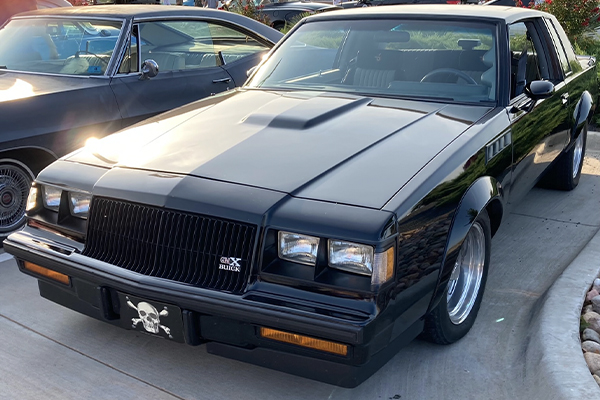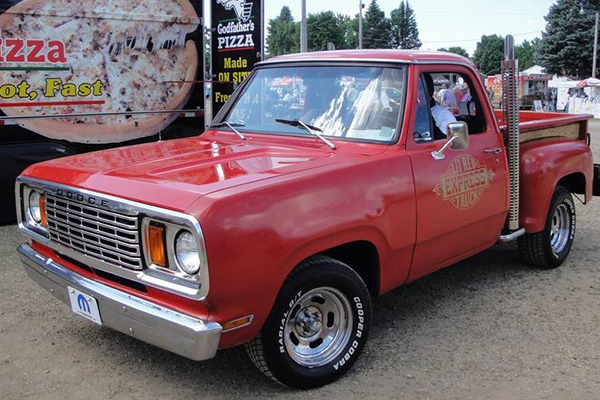From timeless icons to everyday essentials, Crucial Cars examines the vehicles we can’t live without. For this installment, we put the spotlight on the wildly popular Fox Body Ford Mustang (1979-1993).
1981 Mustang Cobra | Sicnag | Wikimedia Commons
No exaggeration — few cars of the last 50 years have been as massively popular among performance enthusiasts as the “Fox Body” Ford Mustang, so-nicknamed because it was based on the Fox chassis that also underpinned the Ford Fairmont, introduced one year prior. This generation of the Mustang, which would run for 15 model years, replaced the largely unloved, Pinto-based Mustang II and quickly became one of the best “bang for the buck” cars of all time.
Produced from 1979 through 1993, this Mustang really came into its own in the mid-’80s, when its 5.0-liter V8 started gaining muscle like Arnold in his heyday. Although some dubbed it the “Box body” due to its upright and squared-off styling, there was no denying its appeal among those who wanted affordable speed. As such, we will concentrate on the performance versions of the car.
Bye Mustang II, hello Mustang new
When the Fox Body Mustang debuted for 1979 in coupe and hatchback body styles, the hot one in the lineup was once again called the Cobra. Although a 5.0-liter V8 was available for the Mustang, it wheezed out just 140 horsepower. The turbo era had arrived, and the Mustang was on board with its available turbocharged 2.3-liter inline four that made the same 140 HP as the V8. Extroverted graphics were still the order of the day, with the Cobra featuring its namesake sitting ready to strike upon the hood. Genuine Recaro sport seats were available as well, offering support and comfort typically not seen in American sport coupes. A special edition Mustang paced that year’s Indy 500, and of course limited production pace car replicas were offered to the public.
Other than the 5.0-liter V8 being replaced for ’80 and ’81 by a 4.2-liter V8 making just 119 hp, the next few years were essentially unchanged.
Muscle makes a comeback
With print ads claiming “The Boss is back”, the 1982 Mustang GT (a resurrected moniker from the ’60s) came with a “high output” 5.0-liter V8 that even with a 2-barrel carburetor and a single exhaust made a then-respectable 157 horses. The turbocharged four was dropped. Ford got more serious for 1983 and bolted on a four-barrel carb and freer-flowing exhaust to the 5.0, resulting in 175 horses. A five-speed manual replaced the four-speed, further boosting performance. That year also saw the return of the turbo 2.3 four — now with fuel injection and 142 hp — and the debut of the convertible body style. Note that you could get the V8 in the base Mustang as well as the GT. The GT could also be had with the turbo four, though most buyers went with the V8.
1984 Ford Mustang GT Convertible | Greg Gjerdingen | Wikimedia Commons
For 1984, the Mustang line stood pat with the exception of a new member of the family — the European-flavored SVO. With its turbocharged and intercooled 2.3-liter four, tuned suspension, four-wheel disc brakes, aggressively-bolstered sport seats, and 16-inch wheels, the 175-hp Mustang SVO was certainly a horse of a different color, providing more sophisticated styling (including a functional hood scoop and a bi-level rear spoiler) and handling/ride dynamics than the GT. Those wheels were huge for the day, as only a few other performance cars such as the Corvette and some Porsches and Ferraris offered 16s back then. Cool as it was, the SVO didn’t sell well, as most Mustang intenders went with the cheaper yet faster (in a straight line, anyway) GT.
1986 Mustang SVO | Jim Ramsey | Wikimedia Commons
As the mid-80s moved on, the second age of the muscle car dawned as new technologies allowed engineers to meet strict emissions standards while improving output. Over at the Ford camp, in addition to updated front and rear styling for 1985, the Mustang’s 5.0 V8 saw its power go up to 210 hp while the base turbo four was dropped. Midway through that year, the SVO got an aero headlight treatment as well as a big power boost to 205 hp. Fuel injection replaced the V8’s four-barrel carb for 1986, and the car’s actual performance was little changed. Sadly that year would be the SVO’s last, wherein it saw a slight dip in stated engine output (to 200 hp).
Power for the 5.0 shot up to 225 hp for ’87, making a V8-equipped Mustang a seriously quick car. The LX notchback with the 5.0 option was lighter than a GT and hence, the hot setup for drag racers. But either way, you had potent performance with 0 to 60 mph and quarter mile times running in the low 6-second and mid-to-high-14-second ranges, respectively. That year also saw the Fox body Mustang’s first serious styling update as the car adopted aero headlights, a grille-less nose (on the GT), and smoother rear quarters wherein the slats gave way to larger, flush-mounted side windows. The GT also got a full lower body ground effects treatment, usually seen in a contrasting silver or gray color.
From ’87 through 1992, the Mustang was little changed apart from a driver’s side airbag debuting for ’90, 16-inch wheels appearing for ’91, and a couple of color-themed appearance packages highlighting the options roster for ’92.
1993 Mustang SVT Cobra | InSapphoWeTrust | Wikimedia Commons
Swan song for a hero of a horse
For its last year, 1993, the Fox Body ‘stang went out with a bang as the SVT Cobra thundered onto the scene. Sporting a massaged 5.0-liter V8 making 235 hp to the newly downrated 205 hp of the standard 5.0, the Cobra also boasted 17-inch wheels and four-wheel disc brakes. The new Cobra further set itself apart from its humbler siblings via a unique grille (with a horse emblem), a different rear spoiler and taillights, and smoother ground effects than the GT. A limited production (just 107 produced), lightened racetrack version known as the Cobra R debuted as well.
Of course, any article on the Fox body Mustang wouldn’t be complete without mention of Vanilla Ice. With his song “Ice, Ice, Baby” hitting the top of the charts in 1990, Vanilla extolled the virtues of his Mustang GT convertible: “Rolling, in my five-point-oh, with my ragtop down so my hair can blow…” Okay, it might not have been the greatest rap song ever, but it was ridiculously catchy and gave Mustang enthusiasts something other than disappearing taillights with which to annoy Camaro and Firebird drivers.
Given its large following, there’s no shortage of enthusiast sites for these Mustangs. You may want to check out fiveohinfo.com, stangnet.com and foxbodymustangs.org.
Whether you want to maintain an original Mustang or modify a newer model, Advance Auto Parts is here to help with plenty of high quality parts.











